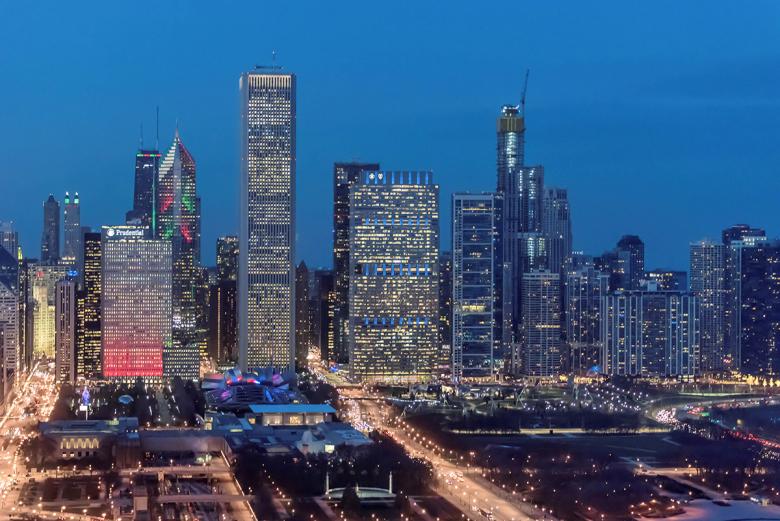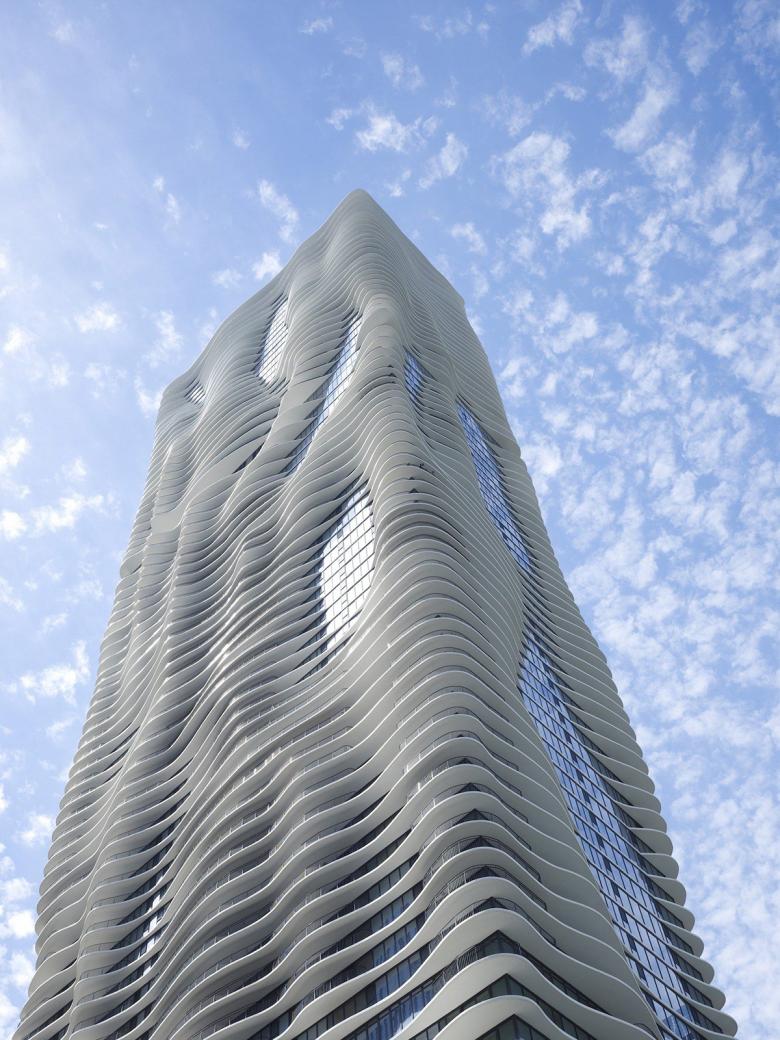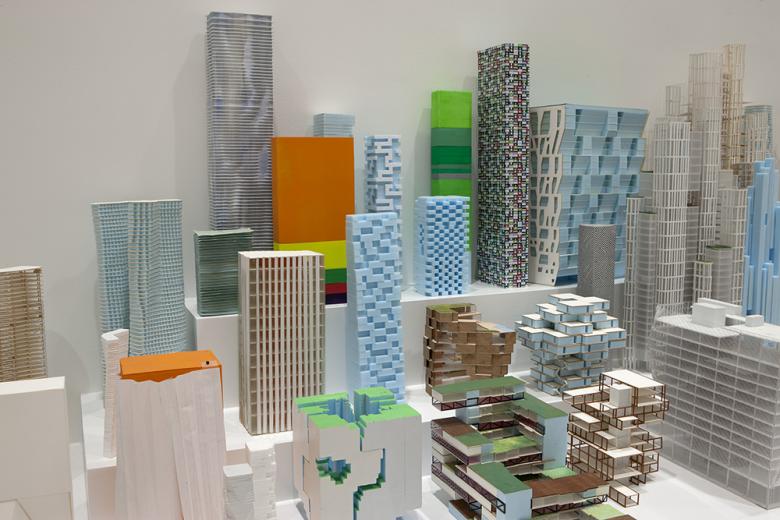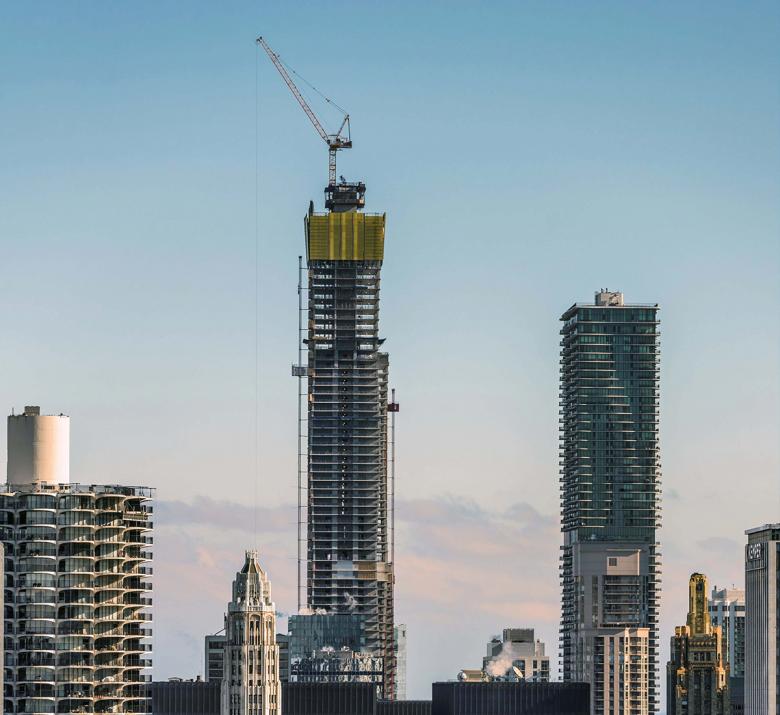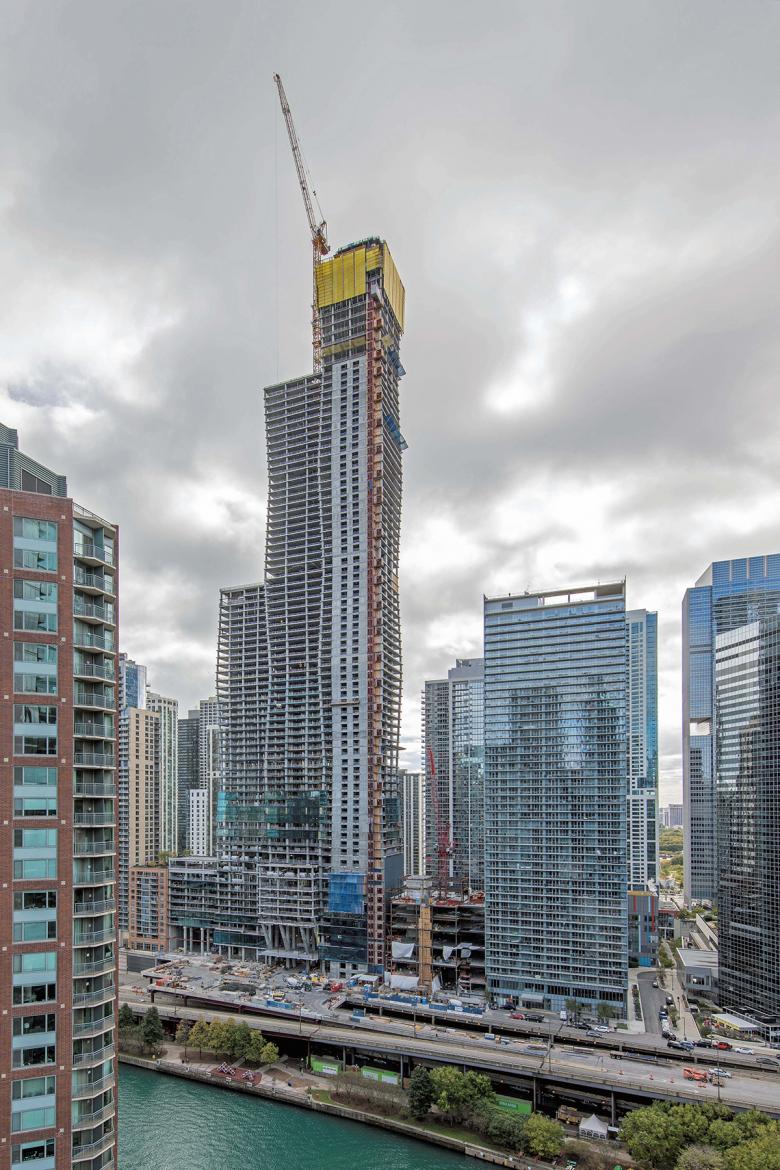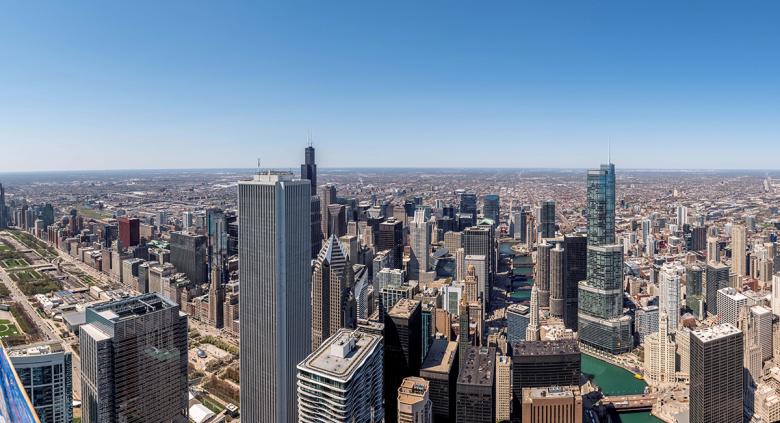How Chicago architect Jeanne Gang has reinvented the American high-rise
The Midwestern 'Anti-Diva'
Ulf Meyer
24. mars 2020
Photo courtesy of Studio Gang
One year ago Vista Tower topped off at 363 meters (1,191 feet), making it the third tallest building in Chicago. Vista towers over the nearby Aqua Tower, which ten years ago brought fame to Studio Gang and its founder, Jeanne Gang. Ulf Meyer looks at Vista in the context of Gang's earlier work and the city she calls home.
High-rise construction in Chicago, the birthplace of the skyscraper, has always been dominated by men. In the late 1800s the architects of the "Chicago School" under Louis Sullivan clad increasingly tall steel-frame office buildings in stone and terracotta facades. The City of Chicago, rebuilding itself after the devastating fire of 1871, was then a breeding ground for the development of the modern high-rise tower, enabled by such inventions as the elevator.
The Great Depression derailed American high-rise construction until, starting around 1950, the modern ideas of German émigré Ludwig Mies van der Rohe, who moved to Chicago in 1938, transformed the design of American high-rises and made “International Style” boxes a worldwide formula. In the decades that followed, Mies’s architecture was copied by such large offices as Chicago’s own Skidmore, Owings & Merrill and spread all over the world.
Innovative high-rise construction in Chicago ran empty in the years of Postmodernism, and since the 1990s sensational high-rises have been built almost exclusively in China and the UAE. Since then, uninspired towers with stacked condominiums catering to suburban buyers have cluttered up Chicago’s distinctive skyline and occupied some of the most attractive urban areas in the city, including the long shore of Lake Michigan. This century, the city’s increasingly popular urban space along the Chicago River was devalued by the seven-meter (20’6”) high “TRUMP” letters at the base of the developer-cum-president's supertall tower. (The CTBUH defines a supertall as "a tall building 300 meters [984 feet] or taller.") In Dubai and Shanghai, on the other hand, the Burj Khalifa, Jin Mao Tower, and other pioneering skyscrapers were built — yet conceived in Chicago.
Aqua Tower, 2010 (Photo: Steve Hall © Hedrich Blessing, courtesy of Studio Gang)
What became Aqua Tower began as yet another boring tower of unusually tall height, designed by the commercial firm Loewenberg Architects as part of Lakeshore East, planned for a prime location on Wacker Drive. (Architect James Loewenberg is also co-founder and co-CEO of Magellan Development, developer of Lakeshore East.) Blair Kamin, the architecture critic for the Chicago Tribune, was horrified. In his opinion, instead of “cookie cutter architecture,” a new design talent should be given a chance. The choice fell on architect Jeanne Gang, whose design caused a sensation: The facade was designed as a "vertical topography" with hills and valleys, the curved balconies drawing gentle patterns on the facade, like a curtain in the wind. The organically shaped balconies not only have design appeal, their cantilevers also serve as shading elements and alleviate the notoriously strong winds in the Windy City
Completed in 2010, the 82-story tower was not only the tallest designed by a female architect, its design finally gave new impulses to the skyline and the local architecture establishment. Gang’s wave design made waves: there was talk of a literal "New Wave" in the design of tall buildings with irregular, sculptural facades. In the eyes of The New Yorker’s Paul Goldberger, Gang questioned the “skyscraper as a symbol of male identity.” In any case, Chicago high-rise architecture was no longer an all-male domain. Gang's first skyscraper catapulted her into the spotlight from projects that were barely larger than one of Aqua’s condos. The 260-meter (859’) tall residential tower earned Gang awards, including “Architect of the Year,” an award given by the Architectural Review, and a solo exhibition at the Art Institute of Chicago in 2012.
Display of study models for tall buildings in Building: Inside Studio Gang Architects at the Art Institute of Chicago in 2012/13 (Photo courtesy of the Art Institute)
Now the architect and her eponymous firm should repeat Aqua's success — or even exceed it — with Vista Tower, a supertall tower also at Lakeshore East. It has the potential to reshape the birthplace of the skyscraper this century. Once complete later this year the third-tallest building in Chicago will house more than 400 apartments and a luxury hotel. It looks like a bundle of three towers with 47, 71 and 93 floors in the form of stacked frusta — an angular shape derived from the geometry of crystals. Where the tower is slim, its blue-green glass is dark; the glass is bright in broader areas. The segments look like stacked pyramid stumps jumping back and forth. Not a single balcony divides the facades, but two floors near the top are empty so the wind can blow through and residents (and the supporting structure) are not exposed to unsightly vibrations.
The client, the Wanda Group from China, is the largest real estate company in the world and known as an operator of cinemas and amusement parks. Compared to Aqua, Vista lacks some refinement; it threatens to stand in the Chicago skyline like a classmate who has grown too tall in the class photo. Instead of fluid lines, the "architecture of the diagonal" has come to characterize Gang's work, including three of her most recent works in Chicago: a student dormitory at the University of Chicago that alludes to the campus’s neo-Gothic architecture; Solstice on the Park, its glass façade angled to the summer sun; and two boathouses on the Chicago River, their rooflines referencing the movements of oars.
Vista Tower under construction, with Aqua Tower on the right (Photo courtesy of Studio Gang)
It was critic Paul Goldberger who dubbed Gang an "Anti-Diva," in a 2010 article of Aqua. Unlike the late Zaha Hadid, Gang refrains from excessive form in favor of practical solutions. Gang is not interested in creative ideology; the form does not go beyond the solution. For her, a draft is not just an opportunity to demonstrate architectural ideas, but an answer to a location, client, and function. In an interview with Vladimir Belogolovsky, she explained that she "gladly delays finding form as long as possible." Born in 1964, Gang studied in the United States and Zurich, then worked for Rem Koolhaas in Rotterdam before founding her own studio in 1997.
"If you can design anything you want without having to do it, you get wild things that don't work. I don't want that," she says. Gang uses geometry of the building itself as its sole decoration and thus returns to the famous Louis Sullivan postulates. In his essay, "The Tall Office Building Artistically Considered" from 1896, Sullivan asked, "How should we give culture to the sterile stack, this bare, rigid cry of eternal pursuit?" Her design for the Vista tower strikes a balance between Late Modernism’s shyness for decoration and the joy of Parametric form. Pragmatism is appreciated in the Midwest — after all, skyscrapers are struggling simultaneously with gravity, specifications, and a real estate economy — but economical routine and repetition in design is not always aesthetically appropriate.
Vista Tower under construction, seen from across the Chicago River (Photo courtesy of Studio Gang)
High-rise apartment buildings, containing expensive often second homes, shape the silhouettes of cities. Thus, a small number of owners, often absent, has a major impact on skylines that are threatening to be full of empty units. Justin Davidson called the new high-rise buildings of the rich "hectares of glazed parquet flooring." In New York, resistance against the new supertall condo "asparagus" has taken aim at the 425-meter (1,396’) tall 432 Park Avenue, whose blocky, gridded form cannot be overlooked, and the trio of supertall towers under construction on the southern edge of Central Park, which cast long shadows onto the green. But Chicago, which lost more than 8,000 residents last year, believes condo buyers are needed as new residents. For example, the recently revealed design by David Childs for the Chicago Spire site — now called 400 Lake Shore Drive — shows entirely residential buildings after a proposed 175-room hotel was scrapped.
Not far from the site of the Aqua and Vista, across from the Illinois Central railroad, whose tracks run from here to New Orleans, Frank Lloyd Wright envisioned The Illinois, a mile-high skyscraper that would have piled up 520 floors in a pencil-thin form. That site became Lakeshore East, which Blair Kamin dubbed an example of the "Loewenberg-ization" of the architectural capital of the world. The "sterile symmetries and inarticulate surfaces" of the buildings surrounding Aqua and Vista "are reminiscent of East Berlin," he wrote of their "comically bad" designs. In this environment, Gang's extraordinary high-rises stand out both physically and architecturally.
The view from atop Vista Tower toward Willis Tower and Trump International Hotel and Tower, the only two skyscrapers in Chicago taller than Vista (Photo courtesy of Studio Gang)
Articles liés
-
The Midwestern 'Anti-Diva'
on 24/03/2020
